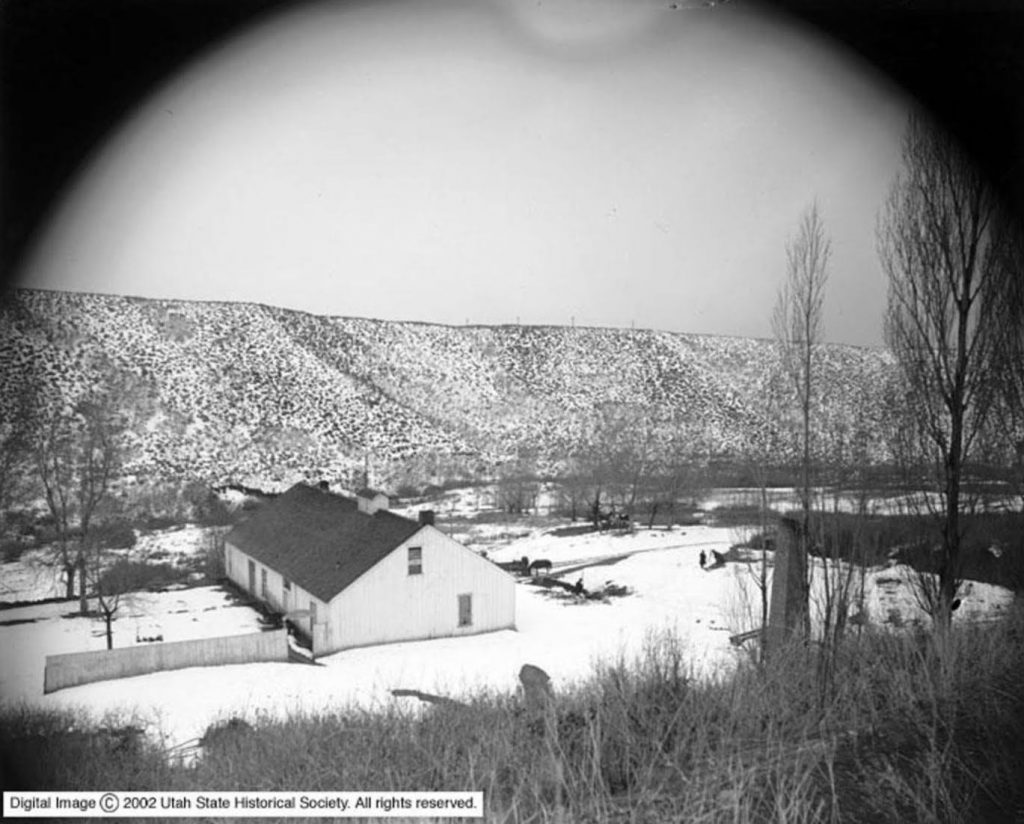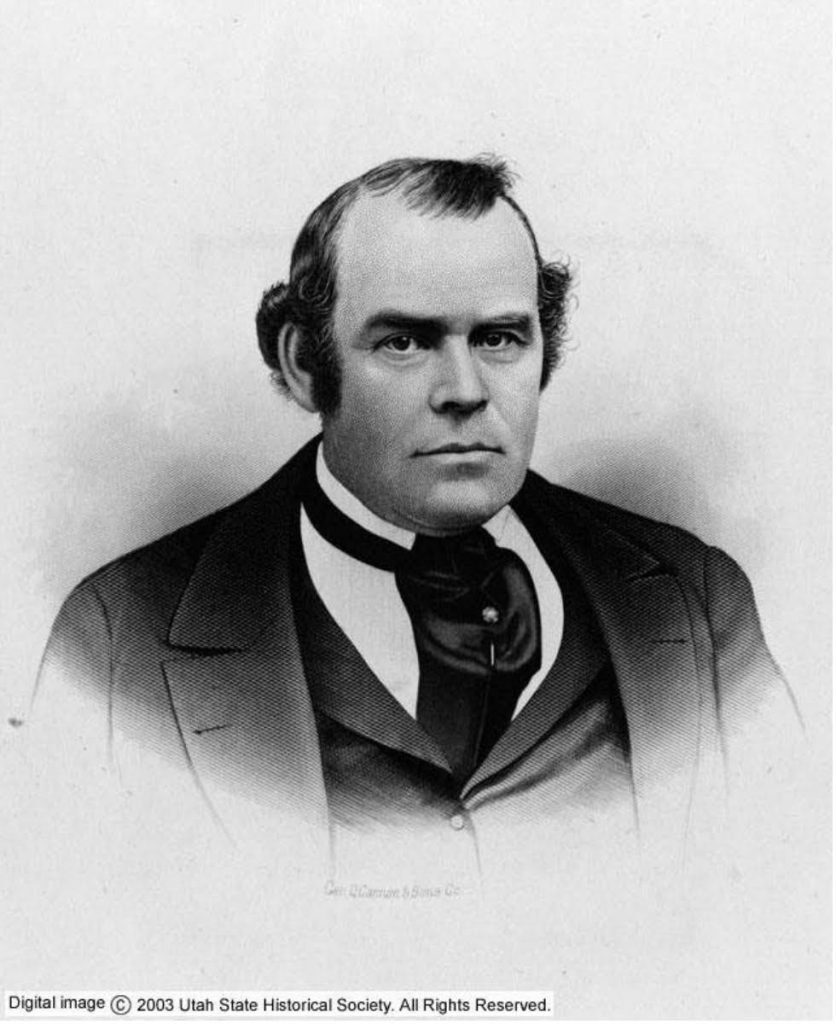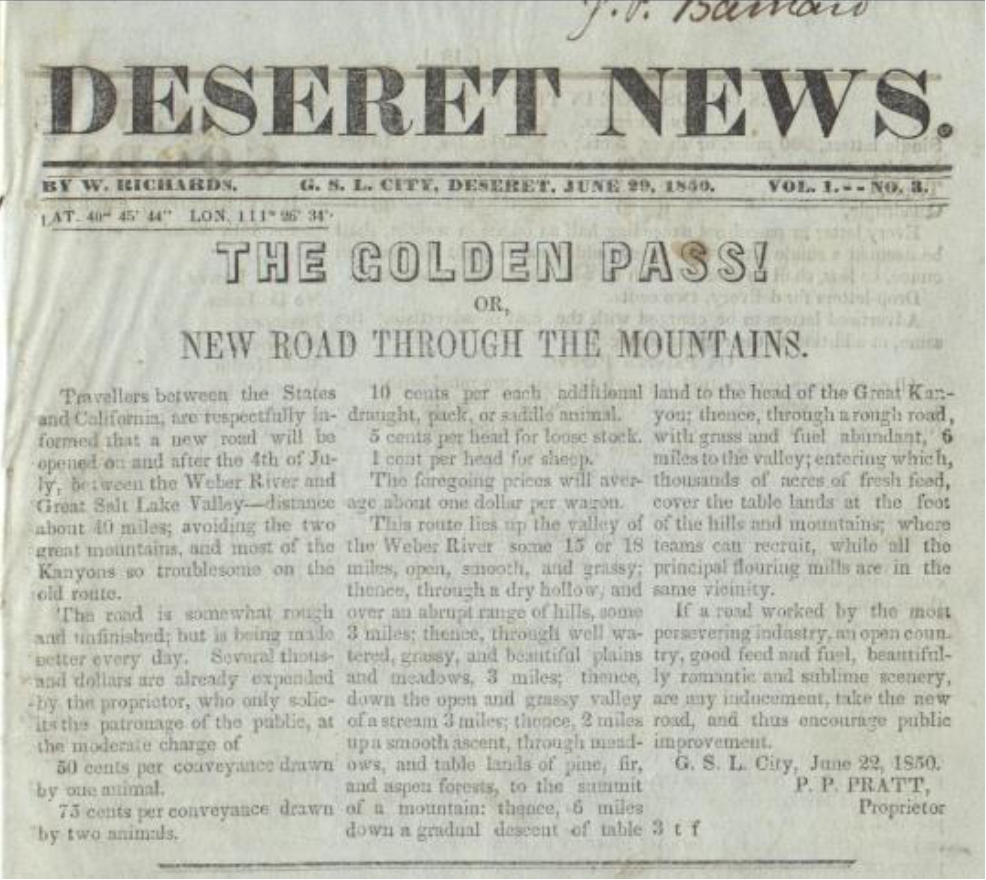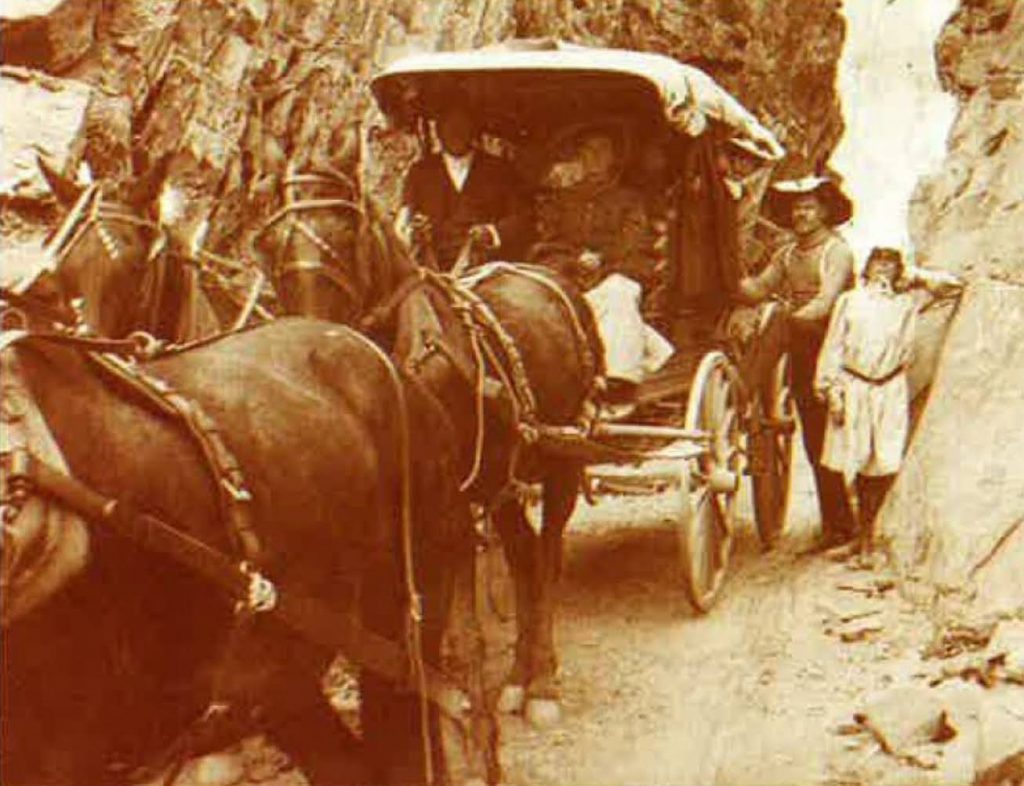One of the best off-leash parks in the city, Parley’s also offers unique insight and first-hand experiences with Salt Lake City’s history and natural environment. Parley’s is located on the southern edge of Salt Lake City, and can be accessed via Parley’s Trail by bikers and hikers or by entering from the west side of the park near Tanner Park. The park contains a daylighted portion of Parley’s Creek, a wildlife refuge area, a natural habitat restoration area, and great views of Parley’s Canyon and the Wasatch Front.
Amenities
- Jogging/Walking Path
- Off-Leash area
- Natural Area
- Historical Sites
- Parley’s Creek
History of Parley’s Historic Nature Park
Parley’s Historic Nature Park encompasses several historical markers within its hollow.
In the mid-1800s, Parley’s Canyon became the easiest route to enter the Salt Lake Valley. A tollhouse for Golden Pass Road became the first historical marker, which charged 50 cents per animal-drawn carriage when in service. You can find its location on the north side of the stream below the Sons of Utah Pioneers Headquarters.
This area’s high usage prompted the building of the second historical marker, Dudler’s Inn and Wine Cellar, in 1864, which was in service to travelers until 1897. The building burned down in 1952, yet sections of the inn’s rock wall, foundation, and wine cellar are still standing.
Slightly south of Dudler’s Inn are remnants of the third historic marker-a sandstone wall and aqueduct built in 1888 and served the needs of the growing population.
A narrow-gauge railroad ran through Parleys Hollow and extended up to Park City in 1888. Initially, it hauled coal, freight, and passengers. Skiers utilized the railroad to Park City starting in the 1930s. 1956 marked the last year the railroad would be in effect.
During the 1970s, there was a push for residential development in the area that was met by strong public pushback. The contention encouraged the City to acquire the 87 acres of land as a future park, parcel by parcel, to preserve the area as a natural open space. In 1985 the final piece was acquired from the State, creating the Parley’s Historic Preserve we know today.



